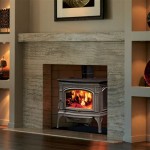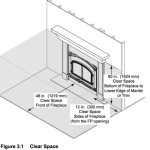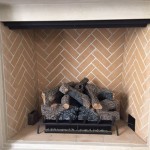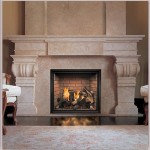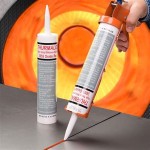Maximizing Fireplace Efficiency with a Fireplace Grate Heater
A fireplace often serves as both a source of supplementary heat and an aesthetic focal point within a home. However, traditional fireplaces are notoriously inefficient, with a significant portion of the heat generated lost up the chimney. A fireplace grate heater aims to address this inefficiency by improving the heat transfer from the fire into the room.
Fireplace grate heaters are designed to be placed within the existing firebox, directly among the burning logs. They utilize a system of metal tubes, often steel or cast iron, that are heated by the fire. These heated tubes, in turn, transfer heat into the surrounding air, which is then circulated back into the room, providing a more effective and controlled heating solution.
The fundamental concept behind a fireplace grate heater is to increase the surface area exposed to the fire and improve air circulation around the firebox. By facilitating better heat exchange, these devices can significantly enhance the overall heating capacity of a fireplace. This results in more warmth being radiated into the living space, reducing reliance on central heating systems and potentially lowering energy costs.
Understanding the Mechanics of Heat Transfer
The performance of a fireplace grate heater hinges on principles of heat transfer: conduction, convection, and radiation. Conduction is the transfer of heat through a solid material. The grate heater’s metal construction allows for efficient conduction from the fire to the tubes. Convection involves the transfer of heat through a fluid, in this case, air. The heater's design promotes air circulation around the heated tubes, distributing the warmth. Radiation is the transfer of heat through electromagnetic waves. The hot surface of the grate heater radiates heat directly into the room.
The design and materials of the grate heater are crucial to optimizing these heat transfer mechanisms. Materials like steel and cast iron possess high thermal conductivity, allowing them to absorb heat rapidly and efficiently. The configuration of the tubes, the spacing between them, and the overall surface area all contribute to how effectively the heater captures and distributes heat. Some models incorporate fans to actively circulate air, further enhancing convective heat transfer.
The effectiveness of a fireplace grate heater can be evaluated by measuring the temperature of the air exiting the unit and comparing it to the air temperature in the room before the heater is used. A significant temperature difference indicates that the heater is effectively transferring heat into the room. However, it's essential to note that the overall impact will depend on various factors, including the size of the room, the insulation of the house, and the type of wood being burned.
Types of Fireplace Grate Heaters
Fireplace grate heaters are available in several configurations, each with its own advantages and disadvantages. These can be broadly categorized into tubular grate heaters, blower grate heaters, and grate heaters with catalytic combustors.
Tubular grate heaters, as the name suggests, consist of a grate structure with multiple tubes running horizontally or vertically throughout. These tubes are typically made of steel or cast iron and are designed to maximize surface area exposure to the fire. They rely primarily on natural convection to circulate heated air. These models are generally simple in design and relatively inexpensive, making them a popular choice for supplemental heating.
Blower grate heaters incorporate a fan, usually electric, to actively force air through the heated tubes. This forced-air circulation significantly increases the rate of heat transfer, resulting in a more rapid and pronounced warming effect. The use of a blower allows for greater control over the direction and intensity of the heat output. However, these models require an electrical outlet and introduce the potential for noise from the fan motor.
Grate heaters with catalytic combustors represent a more advanced technology aimed at both improving heat output and reducing emissions. Catalytic combustors are devices that facilitate the more complete combustion of wood smoke. By burning off gases and particulate matter that would otherwise be lost up the chimney, these units increase the overall heat yield from the fire and reduce environmental pollution.
The selection of the appropriate type of fireplace grate heater depends on individual needs and priorities. Tubular grate heaters offer a simple and cost-effective solution for basic heat enhancement. Blower grate heaters provide a more powerful and controlled heating option. Grate heaters with catalytic combustors offer a balance of enhanced heat output and reduced emissions. Considerations such as budget, electrical availability, desired heating capacity, and environmental concerns should all factor into the decision-making process.
Installation and Maintenance Considerations
The installation of a fireplace grate heater is generally straightforward, requiring minimal technical expertise. Most models are designed to simply be placed within the existing firebox, resting on the hearth. However, it is crucial to ensure that the grate heater is sized appropriately for the specific fireplace, allowing for adequate clearance around the firebox walls and chimney flue. Insufficient clearance can impede airflow, leading to overheating and potentially hazardous conditions.
For blower grate heaters, access to an electrical outlet is required. The power cord should be carefully positioned to avoid contact with hot surfaces and minimize tripping hazards. Some models may require minor assembly, such as attaching the fan unit to the grate. It is essential to follow the manufacturer's instructions carefully during installation.
Proper maintenance is crucial for ensuring the continued performance and longevity of a fireplace grate heater. Regular cleaning is necessary to remove ash, soot, and creosote buildup. Accumulated debris can impede airflow, reduce heat transfer efficiency, and increase the risk of chimney fires. The grate should be inspected periodically for signs of corrosion or damage, and any worn or broken components should be replaced promptly.
For blower grate heaters, the fan motor should be cleaned regularly to remove dust and debris. A build-up of dust can reduce the fan's efficiency and potentially cause it to overheat. The fan blades should also be inspected for damage and replaced if necessary. For grate heaters with catalytic combustors, the combustor unit should be cleaned and inspected according to the manufacturer's recommendations. The catalytic element may need to be replaced periodically to maintain optimal performance.
Safe operation is paramount when using a fireplace with a grate heater. Never overload the firebox with wood, as this can lead to excessive heat buildup and potentially damage the heater. Always use a fire screen to prevent sparks and embers from escaping the fireplace. Ensure that the chimney is regularly inspected and cleaned to prevent creosote buildup. Install and maintain working smoke detectors and carbon monoxide detectors in the home to provide early warning of potential hazards.
The consistent and responsible use of a fireplace grate heater, coupled with diligent maintenance practices, can significantly enhance the heating efficiency of a fireplace, providing a more comfortable and sustainable heating solution for the home. By understanding the principles of heat transfer, selecting the appropriate type of heater, and adhering to safety guidelines, homeowners can enjoy the warmth and ambiance of a fireplace while minimizing energy waste and environmental impact.

Grate Heater Wikipedia

5 Tube Grate Heater Wood Burning Fireplaces

Tube Fireplace Grate Heater For Zc Fireplaces

Choose A Fireplace Grate Heater From The 3 Top Ing For 2024

Medium Double Row Tube Fireplace Grate Heater With Dual Blowers Hastyheat

Warming Vortex Fireplace Blower Grate Heater 2220

4 Tube Grate Heater Wood Burning Fireplaces

5 Tube Fireplace Grate Heater For Zero Clearance Fireplaces

Spitfire Tube Fireplace Heaters Heater Blower Heating And Plumbing

Custom Firescreen Fh Series 10 Tube Fireplace Grate Heater Us



